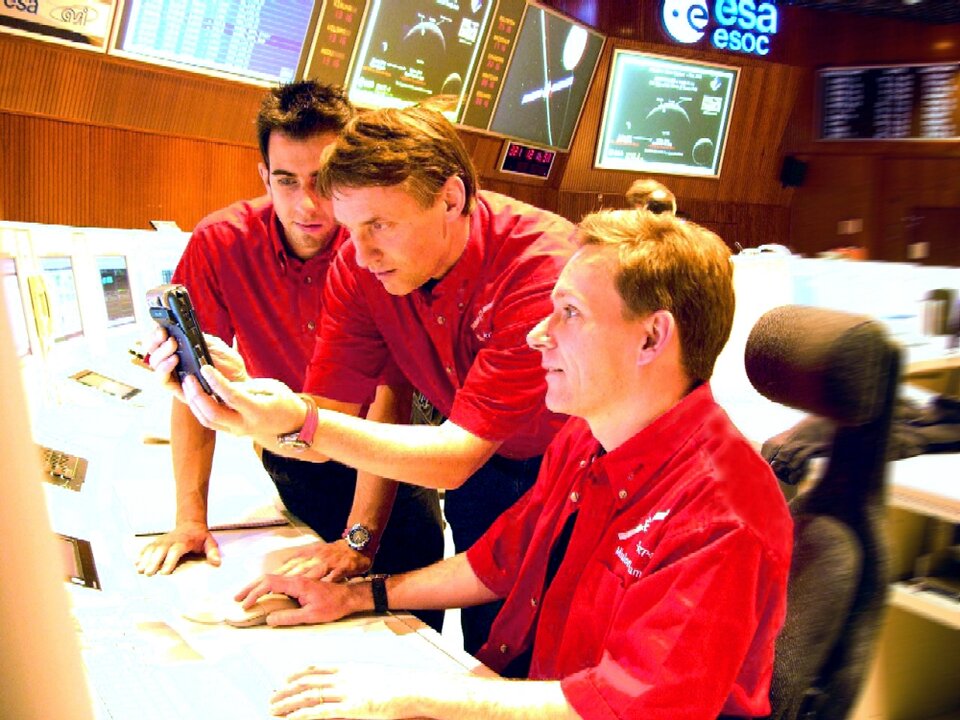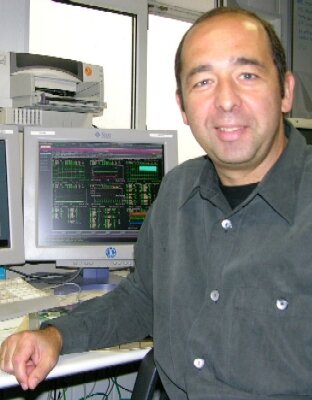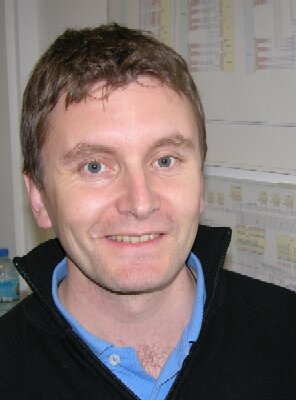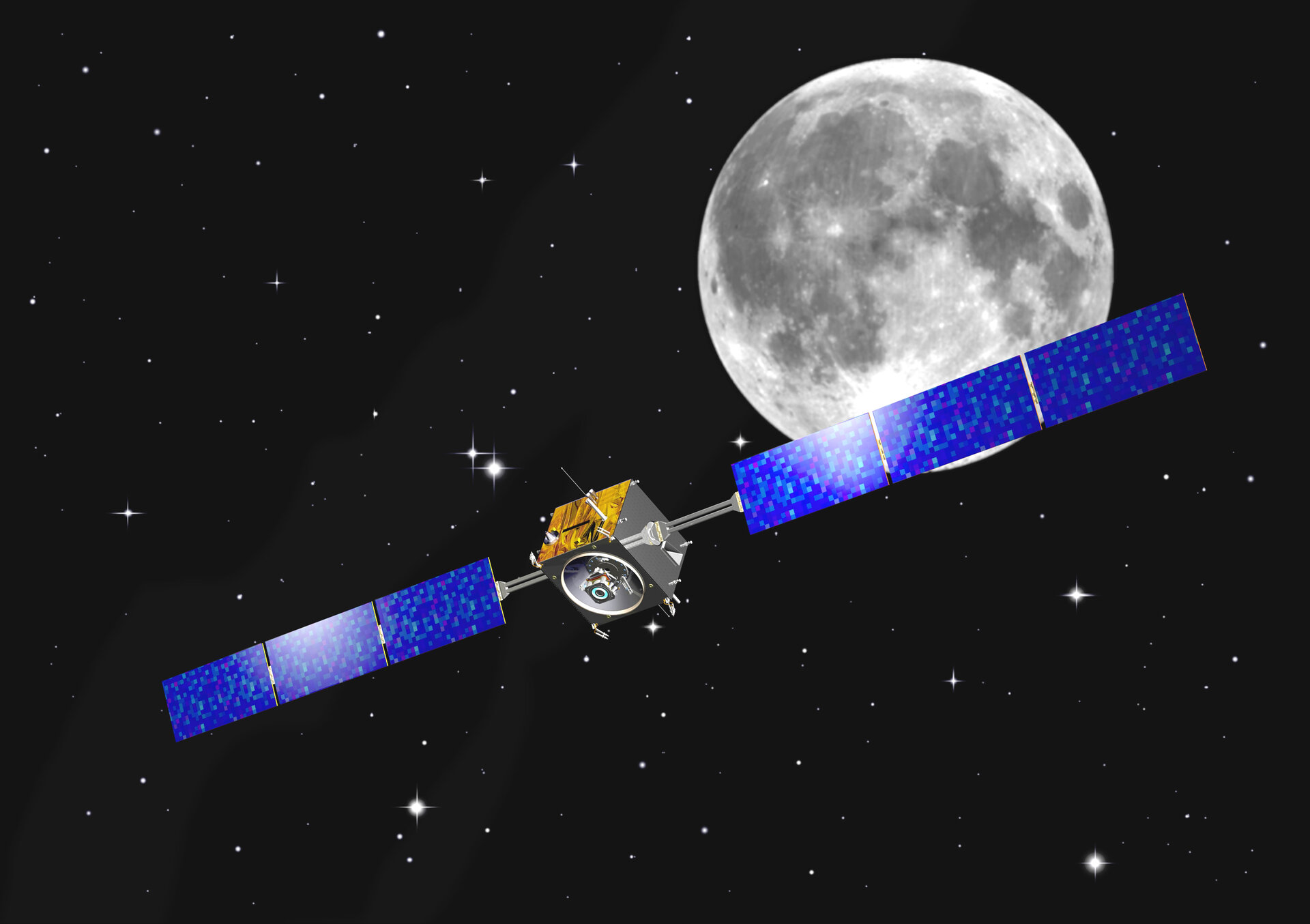SMART-1 captured into lunar orbit
SMART-1 was successfully captured by the Moon's gravity on 15 November at 18:48 CET, marking a significant milestone for ESA's first mission to the Moon. Capture occurred after SMART-1's solar-electric propulsion system was fired to start slowing the craft into its planned nominal Moon orbit.
SMART-1 (Small Mission for Advanced Research in Technology) used the Moon's gravity to enter lunar orbit since its new, ion-thrusting electric propulsion (EP) engine requires a long time to accelerate or slow the craft. Engineers describe the EP thrust as "similar to the weight of a sheet of paper on your hand". The engine, however, requires very little fuel compared to a conventional rocket motor.
The past fortnight saw a growing level of activity at ESA's Space Operations Centre (ESOC) in Darmstadt, Germany, with the SMART-1 flight control team switching from normal routine to full-time monitoring as the craft approached the point of capture.
Critical manoeuvres monitored around the clock

On Monday, flight control staff moved from SMART-1's Dedicated Control Room to ESOC's larger Main Control Room to better access support and other services that could be required during the capture.
"The flight control team is now providing 24-hour monitoring with on-call support from other teams at ESOC," said Octavio Camino-Ramos, Spacecraft Operations Manager for SMART-1, speaking at a press briefing at ESOC on 16 November.

Together with Prof. David Southwood, ESA Director of Science, Gaele Winters, ESA Director of Operations, Giuseppe Racca, SMART-1 Project Manager, Bernard Foing, Project Scientist and Giorgio Saccocca, Propulsion Senior Engineer, Camino-Ramos spoke in front of a wide range of media representatives, including TV and print. He also reported the spacecraft was "in good status with all functions performing nominally".
The challenge facing the control team now is using the EP engine to slow the craft and transition from its capture point and initial orbit, ranging between approximately 5500 and 50 000 kilometres, into the much lower, elliptical, operational orbit, which will range from 300 to 3000 kilometres above the Moon.
This is lower than the originally planned 300 by 10 000-kilometre orbit, and offers a lot of advantages for the scientific instrumentation onboard SMART-1 according to Camino-Ramos. The lower orbit is possible, at least in part, due to the better-than-planned operation of the EP engine while the craft was approaching the Moon.
Except for minor corrections, including a fine-tuning manoeuvre of around four hours duration on 25 October, the EP engine has been off since the end of the last resonance burn which lasted almost 100 hours, ending 14 October 2004. Resonance burns are engine thrusts used to take advantage of terrestrial or lunar gravity to accelerate SMART-1.
The flight control team restarted SMART-1's EP engine at 06:24 CET, 15 November; it will run almost continuously for the next two weeks, a critical period, and then for a series of shorter bursts culminating with entry into the 300/3000-kilometre operational orbit on 13 January 2005.
Powering into stable orbit

Speaking in early November, David Milligan, team member responsible for the EP engine, said, "We have to start the [two-week] burn right away since the initial orbit is unstable and would otherwise decay in only a few weeks".
In addition to closely monitoring engine operation during burns, Milligan and colleague Daniel Gestal manage on-board power including the operation of the solar power system.
Most of the power generated from the spacecraft's solar-cell arrays is used by the EP engine, and adequate power cannot be supplied by the batteries in case of significant off-pointing (i.e. if the panels are not facing directly at the Sun). The idea is to maximise the flow of power to the engine.
In addition to monitoring and fine-tuning EP engine performance, the SMART-1 Flight Control Team is in regular contact with ESOC's Flight Dynamics (FD) team, feeding vital performance data to help FD staff track the craft's position in extreme detail.
During the current Moon-capture period, dynamics specialists are on-call 24 hours per day to provide support in case alternate trajectories are needed (in case, for example, the EP engine under or over performs).
Specialists from other functional support teams at ESOC have also contributed to SMART-1's success, including staff from ground facilities, data systems infrastructure and navigation support.
Rick Blake is the SMART-1 team member responsible for TT&C (Telemetry Tracking and Control) and mission planning. "My role during the capture phase has been to ensure communications with the ground segment and tracking and the upload of payload instructions, especially for the AMIE pictures of the Moon," he says.
The AMIE (Advanced Moon micro-Imager Experiment) is a sophisticated imaging system comprising a digital camera with a powerful teleobjective lens.
Other members of the SMART-1 flight team have also been heavily involved in the capture, including Sascha Ricken (for data handling), Jurriaan De Bruin and Maria Alonso (Attitude and Orbit Control System).
SMART-1 team esprit
Working on the SMART-1 mission has generated a strong sense of esprit, generated in part by having overcome challenges as a team — and not all of the challenges have been scientific.
Blake explained that he and team mate Sascha Ricken volunteered to pull the night shifts during SMART-1's 100-hour burn back in October, generally coming into the control room at 21:00 and staying until the day shift came on the next morning.
Despite the long hours and demanding schedule during October and November, the entire SMART-1 team was in high spirits today with the Moon orbit announcement.















 Germany
Germany
 Austria
Austria
 Belgium
Belgium
 Denmark
Denmark
 Spain
Spain
 Estonia
Estonia
 Finland
Finland
 France
France
 Greece
Greece
 Hungary
Hungary
 Ireland
Ireland
 Italy
Italy
 Luxembourg
Luxembourg
 Norway
Norway
 The Netherlands
The Netherlands
 Poland
Poland
 Portugal
Portugal
 Czechia
Czechia
 Romania
Romania
 United Kingdom
United Kingdom
 Slovenia
Slovenia
 Sweden
Sweden
 Switzerland
Switzerland


























